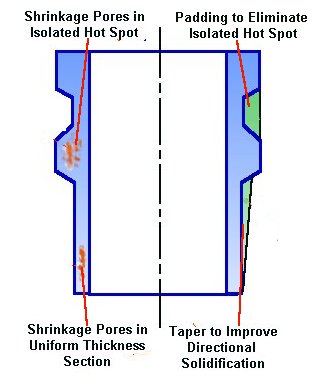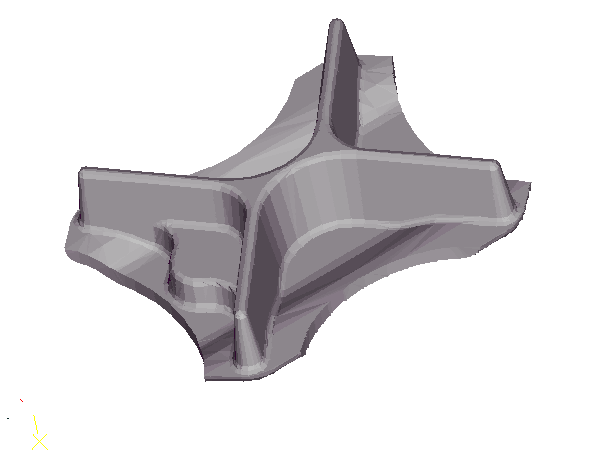| Eliminate
or Reduce Isolated Hot Spots In
evaluating a component design, the casting engineer looks for isolated thick sections
which could be "hot spots" where shrinkage porosity or "hot tears"
might form.
- As metal in thin sections solidifies first, the
thicker section will be isolated from the molten metal feed and shrinkage porosity can
form in the thick section .
- The thin connecting section into the thicker section
should be "padded" to improve the thermal connection and metal flow into the
"hot spot".
Directional Solidification
The casting engineer studies the design to see if the
thermal gradients in the piece will promote directional solidification. Review the
design, looking for flat sections that can be lightened and long thin ribs that need to be
tapered to promote directional solidification
- Large flat sections are difficult to feed and to
develop good directional solidification. Adding taper along a rib or section from the cold
region to the hot region promotes directional solidification and prevents shrinkage pores.
|

Generic Example of Padding and Taper

|